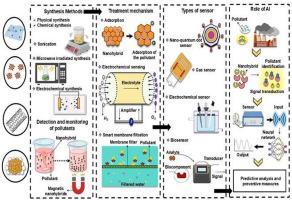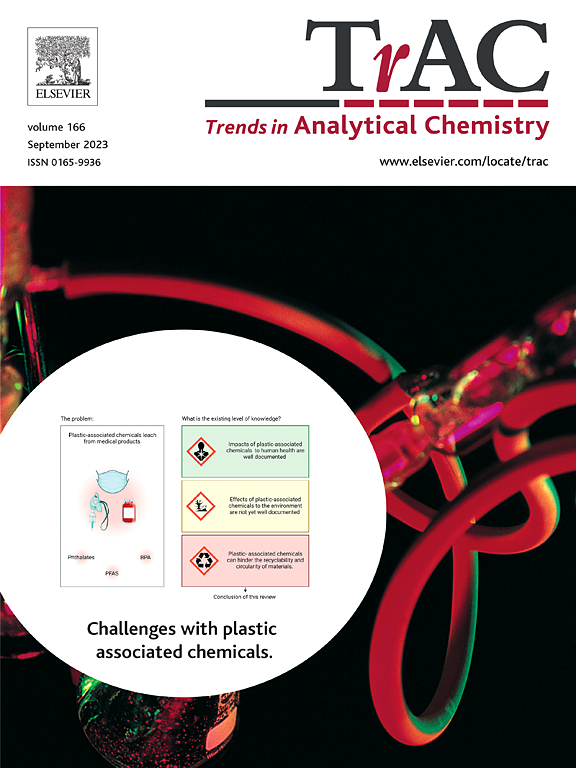复杂环境和生物基质中痕量污染物精确分析筛选的纳米混合方法
IF 12
1区 化学
Q1 CHEMISTRY, ANALYTICAL
引用次数: 0
摘要
在复杂的生物和环境基质中,纳米杂化技术已成为精确分析筛选微量污染物的有效手段。通过结合有机和无机成分,这些混合材料提供改进的污染物检测灵敏度,选择性和多功能性。它们的用途包括药物残留筛选、微生物污染检测和环境监测。精密的纳米混合传感器,如金属掺杂电化学传感器和纳米量子点传感器,使高精度的实时分析成为可能。此外,人工智能驱动的优化和多模态检测技术正在推动污染分析。尽管它们具有潜力,但在广泛应用之前,需要解决诸如环境影响、可重复性和稳定性等问题。为了提高生产力和减少环境危害,未来的进展应集中在人工智能辅助检测模型和可持续合成技术上。本文章由计算机程序翻译,如有差异,请以英文原文为准。

Nanohybrid approaches for precise analytical screening of trace contaminants in complex environmental and biological matrices
In complex biological and environmental matrices, nanohybrid technologies have become effective instruments for the accurate analytical screening of trace contaminants. By combining organic and inorganic components, these hybrid materials provide improved pollutant detection sensitivity, selectivity, and multifunctionality. Their uses include pharmaceutical residue screening, microbial contamination detection, and environmental monitoring. Highly accurate real-time analysis is made possible by sophisticated nanohybrid sensors, such as metal-doped electrochemical sensors and nano-quantum dot sensors. Furthermore, contamination analysis is being advanced by AI-driven optimization and multimodal detection techniques. Notwithstanding their potential, issues like environmental impact, reproducibility, and stability need to be resolved before they can be widely used. To increase productivity and reduce environmental hazards, future advancements should concentrate on AI-assisted detection models and sustainable synthesis techniques.
求助全文
通过发布文献求助,成功后即可免费获取论文全文。
去求助
来源期刊

Trends in Analytical Chemistry
化学-分析化学
CiteScore
20.00
自引率
4.60%
发文量
257
审稿时长
3.4 months
期刊介绍:
TrAC publishes succinct and critical overviews of recent advancements in analytical chemistry, designed to assist analytical chemists and other users of analytical techniques. These reviews offer excellent, up-to-date, and timely coverage of various topics within analytical chemistry. Encompassing areas such as analytical instrumentation, biomedical analysis, biomolecular analysis, biosensors, chemical analysis, chemometrics, clinical chemistry, drug discovery, environmental analysis and monitoring, food analysis, forensic science, laboratory automation, materials science, metabolomics, pesticide-residue analysis, pharmaceutical analysis, proteomics, surface science, and water analysis and monitoring, these critical reviews provide comprehensive insights for practitioners in the field.
 求助内容:
求助内容: 应助结果提醒方式:
应助结果提醒方式:


